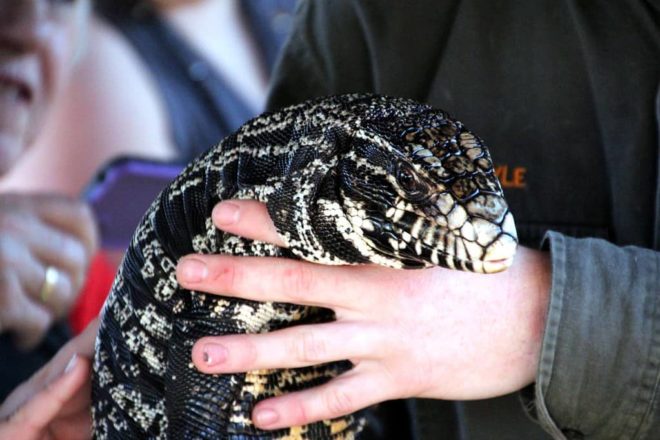Tegus are large lizards native to the South and Central American regions. They can be found for sale as pets in the Southern United States, and sometimes are located as an invasive species in South Carolina, Georgia, and Florida. Owners of the Tegu lizard find the experience of housing one of them both extremely rewarding, but challenging. Needless to say, the Tegu lizard is not a great option for a beginner.
Tegu lizards exist in a host of varieties, so it is important to be able to distinguish and identify them. This is because while some are docile, intelligent, and make great pets, others are massive (as long as 4 feet) and aggressive. If you want to learn more about these fascinating reptiles, the different species and morphs that exist, and many interesting facts about them, read on.
What Are Tegu Lizards?
The name Tegu applies commonly to two particular lizard families, Gymnophthalmidae and Teiidae. Between these two families are more than 400 distinct lizard species, that span a habitat of more than 1,000 miles, covering Central and South America. Due to such high distribution, they exist in a host of environmental habitats, including lagoons, swamps, savannas, semi-deserts, and rainforests. This is particularly notable because it shows that the lizards can adapt to most environments, and if transported to a new location, can likely thrive as an invasive species.
A significantly large population of White Argentines and Black Tegus currently inhabit Florida. This is due to unsuspecting pet owners acquiring these lizards as pets, then realizing that they are a significant amount of effort to care for, and simply releasing them into the wild.
By their appearance, certain Tegu lizards could be mistaken for monitor lizards (such as a Komodo Dragon) due to their bulky, large build, but the two species are hardly related at all. That said, the Tegus can grow to between 3 and 5 feet in length and weigh as much as 20 lbs. Their size precludes owners from keeping them in a small enclosure. They need to have ample space both indoors and outdoors.
Most of the lizard’s time should be spent in its cage, where the animal can bask or swim, but once a day they need to be allowed to roam outdoors to walk around, though under strict supervision from its owners. Because of their high level of intelligence, these reptiles can be house-trained as well.
Most Tegu lizards are easily recognizable for their banding white and black patterns, though some can be orange, green, speckled red, and even green. Most species have thick necks (covered with lots of skin folds) and long snouts, along with forked tongues, small scales, and 5 distinct toes. Their bodies are stocky, and they drag a heavy, thick tail behind them. Other characteristics largely depend on the type of morph.
In the wild, Tegu lizards live all over the place, so they can be found in the water, on the ground, and even scaled up in trees. Many of these lizards are captured and brought over to other regions for sale, but not all can or should ever be kept as pets. This includes Sun Tegus, Four-Toed Tegus, Dwarf Tegus, and Crocodile Tegus. Many other species also do not make ideal pets. The most commonly accepted pet variants are the Caiman, Argentine Black and White, Argentine Red, and Blue Tegus.
Committing to a Tegu lizard adoption requires significant consideration. You must be prepared to deal with an intelligent lizard that requires plenty of exercises and needs a sizable living space. Far too many people get to be reptile owners without realizing the time and dedication it takes to be one. These lizards are a lot of work, but if you feel you are suited to house a Tegu as a pet, read on to find out about the various Tegu species.
9 Tegu Lizards Species
1. Crocodile Tegu Lizard
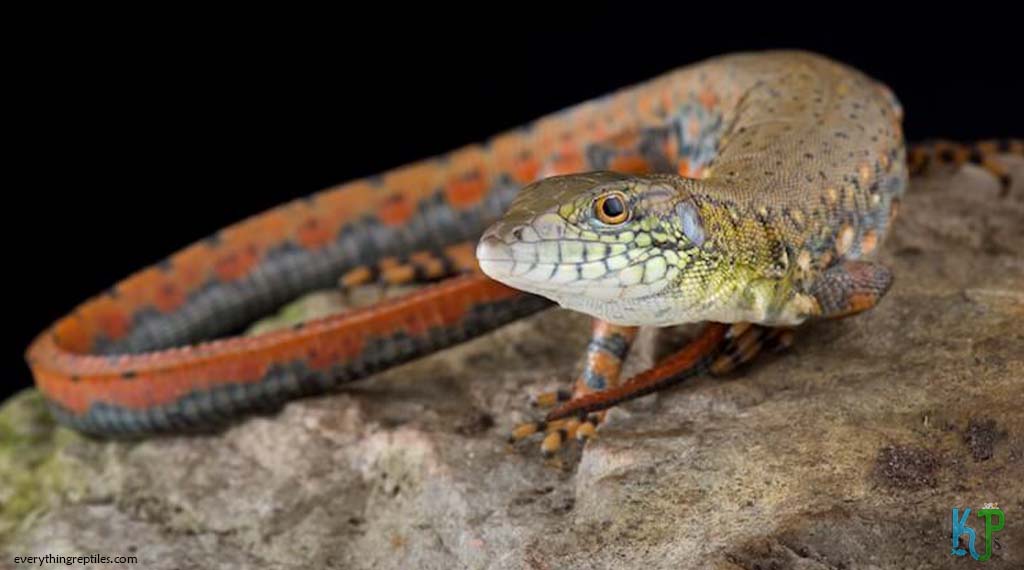
Residing in their habitats across Brazil, Peru, French Guinea, Colombia, and Venezuela is one of the rarest and smallest Tegu lizard species, the Crocodile Tegu. While it would never be mistaken for a crocodile, its thing body, squared head, and long tail do allow the likeness to attribute to the naming a bit. The heads are usually of a brownish-green tint, while the body is brownish gray, and a gray tail with traces of red.
Another thing this species has in common with its namesake is that it enjoys spending time in the water. They find swimming easy, aided by their short legs, so they spend a lot of time in lagoons and streams. They live in proximity to Caiman lizards, but since their diet consists mostly of fish, frogs, arthropods, and crustaceans, they do not compete with the Caimans for food. In fact, they hardly interact with them at all.
This is not a species that is sold as pets, which is for the best since they would not do well as such. The Crocodile Tegu lizard is also rare enough that they are hardly ever found in the wild. When found, they should be allowed to remain in the wild so that they can continue to populate.
Some less-than-savory characters do end up capturing them though and try to sell them as pets. Those who make the poor decision of purchasing them, have to pay up as much as $13,000. Realistically, the only people who have a chance of doing a good job raising the Crocodile Tegu are field researchers and experienced herpetologists. While they can sometimes be found in zoos, it is rare for someone to keep on in their home.
2. Albino Tegu Lizard
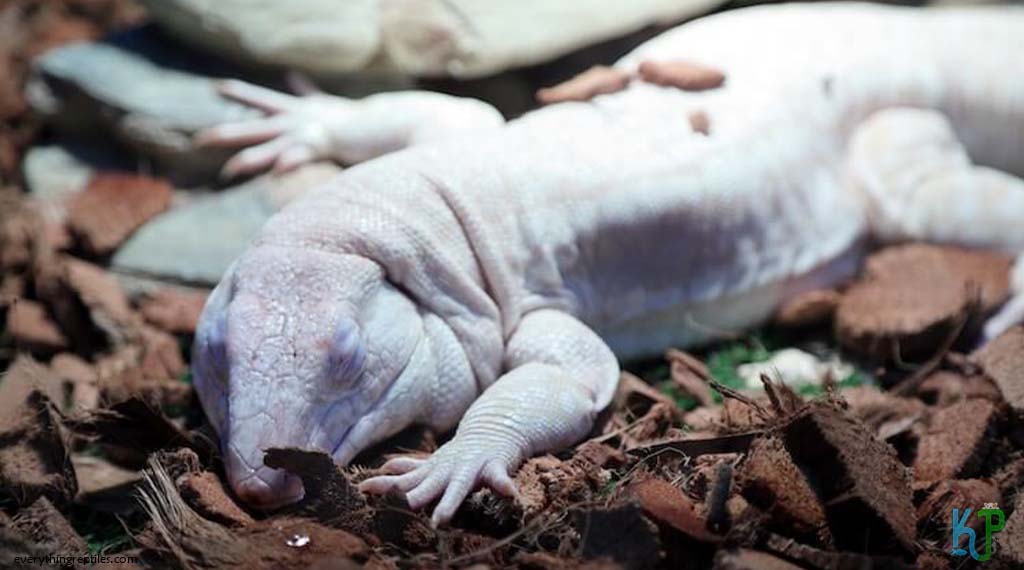
The Albino Tegu is actually a morph of the Argentine Tegu. They are bred selectively in the same manner as herpetologists breed other lizards, including bearded dragon morphs. These morphs lack the pigmentation of their Argentine species, so they have a lot of white and various patterns on their bodies. They can also be covered in red spots or pale grayish-black bands.
When two morphs are bred together, such as in the case of the Albino and the Ice morph, they produce one with even lighter white skin, called the Ice Albino Tegu.
Albino Tegus are rarely found in the pet trade and are kept typically only by herpetologists who shell out as much as $3,000 to raise the animal
3. Purple Tegu Lizard
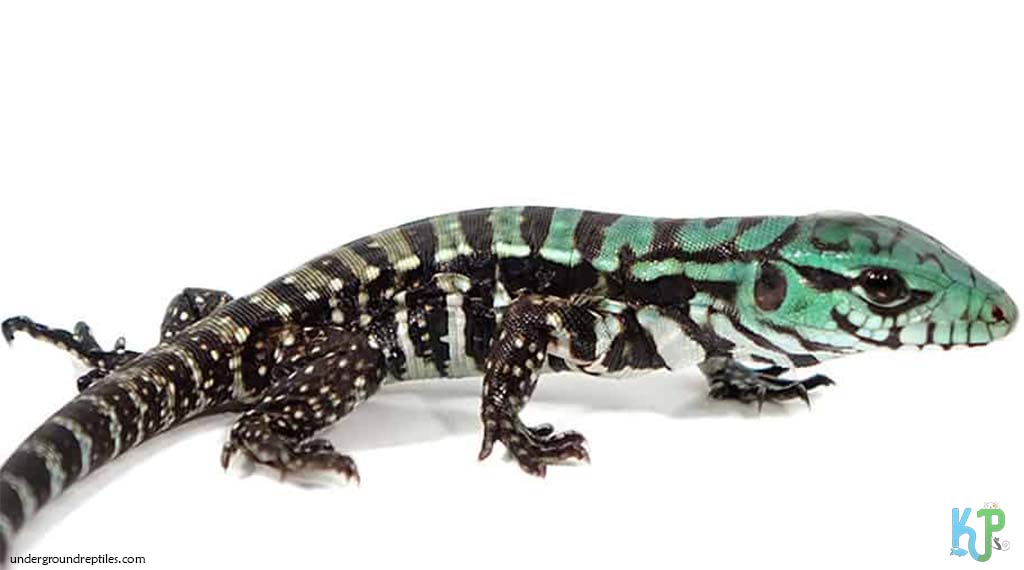
Much like the Albino, the Purple Tegu, but a morph, commonly believed to be derived from the breeding of Red and Blue Tego lizards (who are morphs themselves), giving them their “purple” monicker. These South American natives are actually not purple. They are not selectively bred, and their natural coloring is actually a mixture of green and black.
Like most other Argentine Tegu species, the Purple Tegu is docile, personable, and intelligent, making this breed a good pet option. Since they are not overly common, they cost between $200 and $400 to acquire.
4. Caiman Lizard
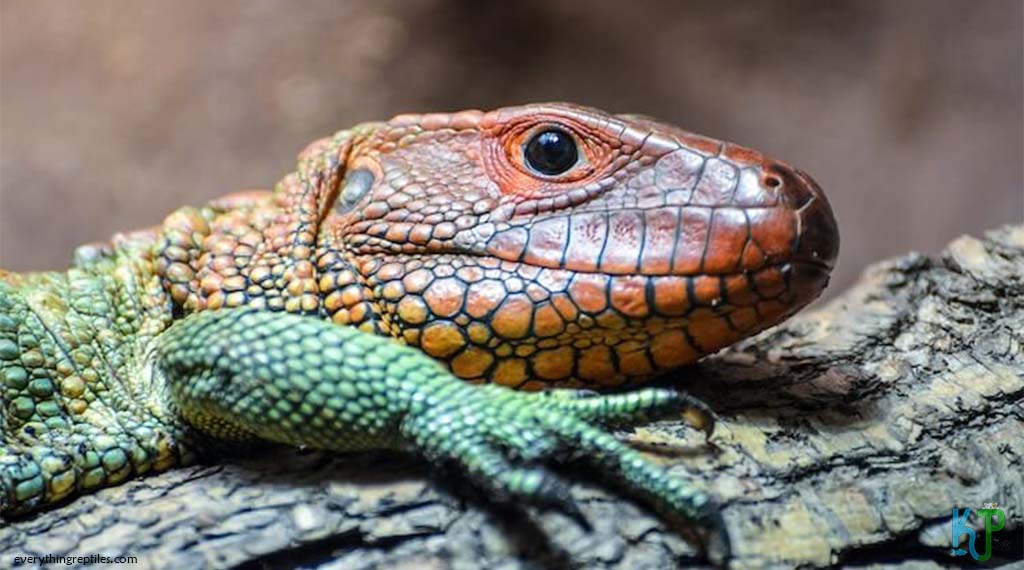
The Caiman lizard, otherwise known as the Water Tegu, is highly sought after as a pet, yet not the most common in that regard. Due to their demand, they usually cost between $400 and $500. They are a rewarding lizard to own, loved for the bright appearance of their green body and orange (or red) head by lizard enthusiasts. Their most distinct identifier is their unique color pattern.
As one of the largest Tegu species, Caimans can grow as long as 5 feet. They are very intelligent, fiercely loyal, and adapted to high skills in terms of climbing and swimming. Therefore, when kept as pets, the Caimans need to be allotted a sizable area for climbing and swimming. In the wild, they spend a lot of time resting on tree branches or swimming in various bodies of water. In fact, bodies of water are one of their favorite resting places.
When kept in a large cage as a pet, it is recommended that a small, foot-depth pool is provided for their swimming needs, and sturdy branches on the sides to accommodate the Caimans’ desire to climb. Needless to say, they will need a significantly large area for housing, requiring owners to dedicate a sizable part of their homes to their living space.
Their diet primarily consists of aquatic snails, an attribute that differentiates them from most of the list’s other Tegu lizards. Since the snails have hard shells, Caimans have powerful jaws that permit them to eat their primary dietary preference. With that in mind, though Caimans are not aggressive by nature, owners need to be aware of the damage that can be done by a bite from them.
5. Colombian Gold Tegu
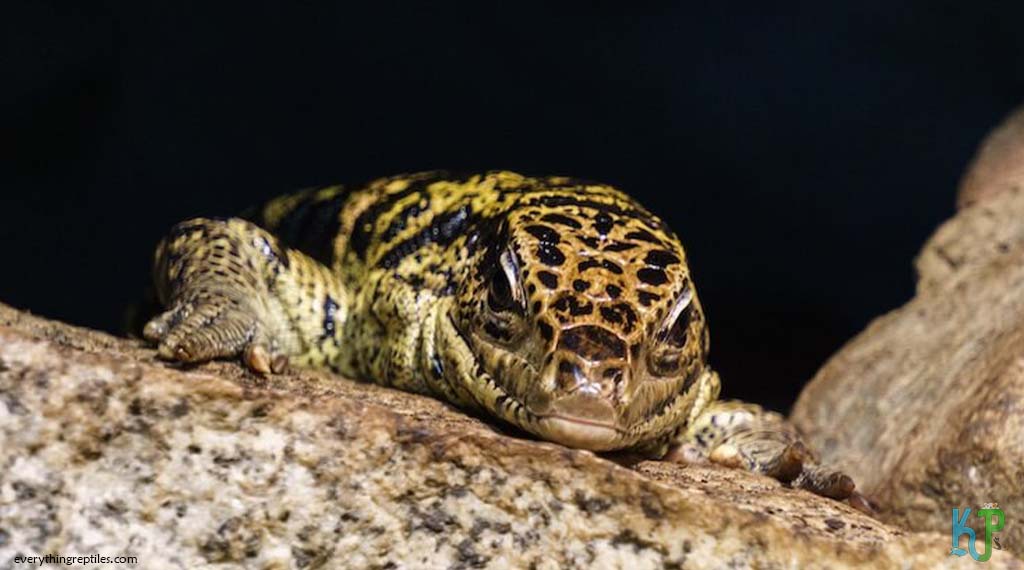
The Columbian Tegu is smaller than the popular Argentine lizards who are some of the most popular to be kept as pets. These small lizards have skin that is brownish gold in color, typically adorned with black bands.
Much like the other Tegu lizard counterparts, the Columbian Tegu has a stocky body and firm tail. Unlike the others, however, they are not apt climbers, so they are happiest exploring their terrain and digging. Therefore, they need maximum space in their enclosure to navigate around.
While some owners can keep them as pets, it is important to know that they are not as easily cared for as Argentine Tegus, because they are less docile and quite a bit more aggressive. Therefore this breed is recommended mainly to owners who have previously owned Tegus and are committed to their proper care. As one of the cheapest Tegu species, a Columbian Tegu can be acquired for about $100.
6. Argentine Red Tegu Lizard
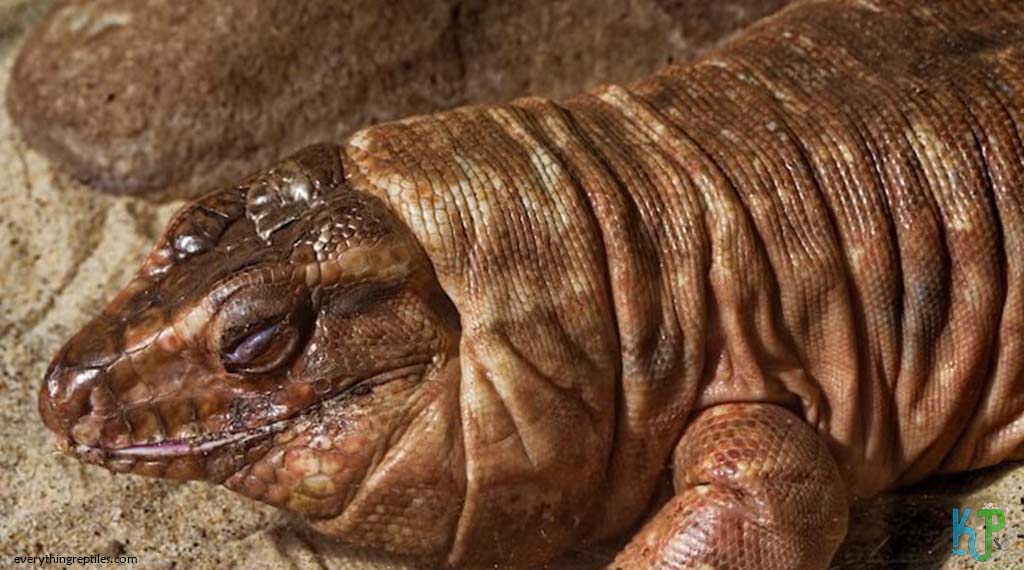
Most Argentine Red Tegu lizards are reddish brown, but some species vary with either white or black-speckled peppering. Along with other Argentine species, the Red lizards are among the most popular, costing around $300 to $400. They are easily tamed and much simpler to care for, making them one of the most appealing Tegus to have as pets. With patience, proper care, and cautious handling, the Argentine Red Tegus can even be trained.
The primary difference between the Red and the Black and White Argentine that is on this list as well is that the Red variants are somewhat smaller, growing to only about 3 feet in length. But their size does not preclude the need for them to live in a large enclosure than their counterparts, as they need ample room for exercise and exploration. Much like in other cases, the enclosure needs to contain a water basin or pool, a basking area. In terms of size, the living enclosure should be at least twice the size of the lizard, but it is better if it is even bigger than that.
7. Chacoan White Headed Tegu Lizard
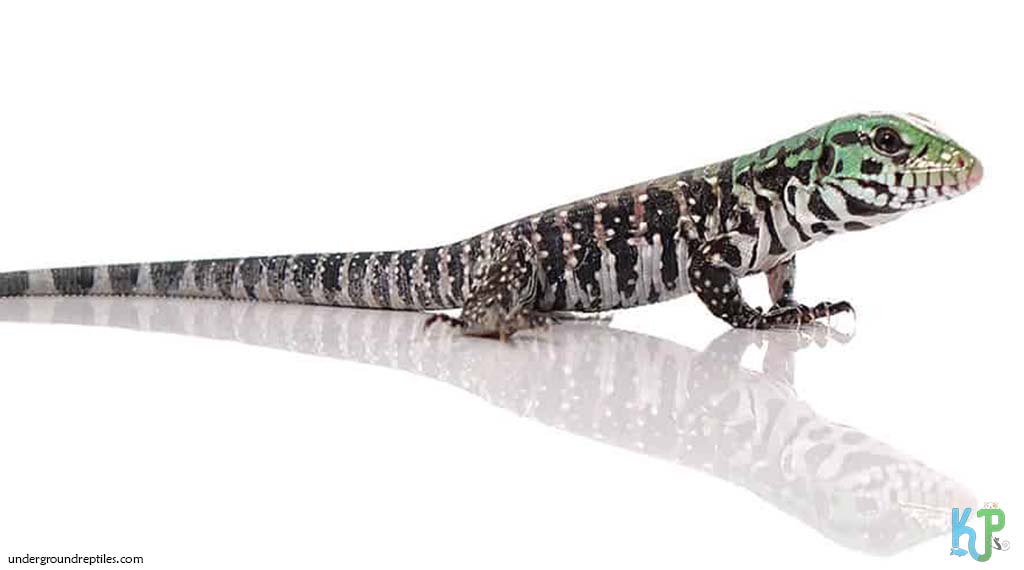
Named for their pure white head, the Chacoan White Headed Tegu lizards, also known as Paraguayan Black And White Tegu, are some of the northernmost residents of the species variations. While they are born with green heads, over the first few years, their heads fade to a white hue. The rest of their skin is mottled skin with black-and-white coloration.
Aside from their white heads, they resemble their Black and White Argentine cousins quite exactly, though while Argentine Tegu lizards predominantly live in the Argentinian regions of South America, the Chacoans are native to more northern areas of the continent in Paraguay. Throughout their existence, however, they have expanded their habitat to Bolivia, Uruguay, Brazil, and Argentina.
Their similarity to Argentine Tegus is not limited to their physical appearance, but also their personality and the nature of the care they require. This makes them great for first-time Tegu lizard owners who can acquire this breed for about $200.
8. Blue Tegu
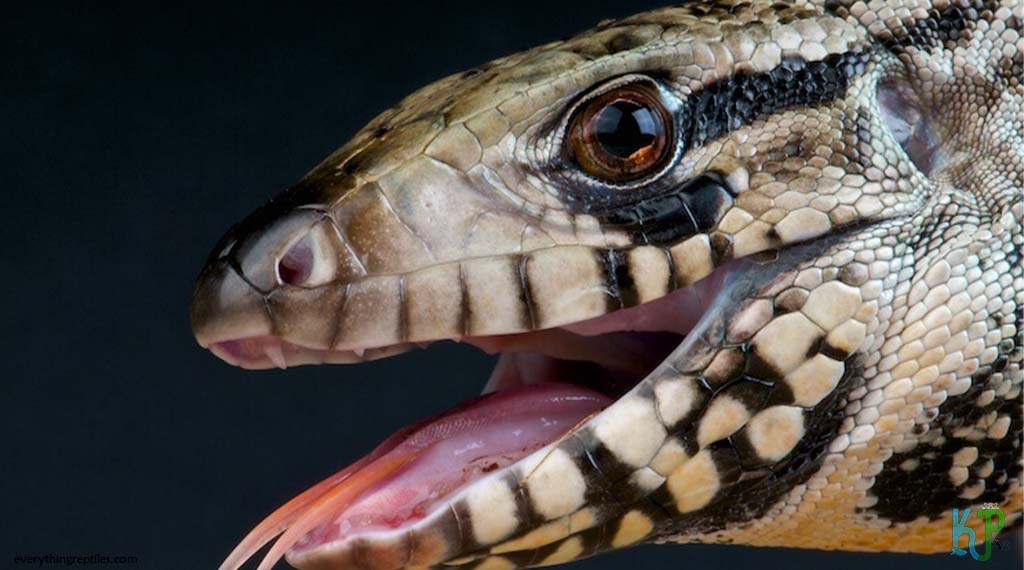
Our list’s final Black and White Argentine morph is the Blue Tegu lizard, named after the light blue tint that characterizes their appearance, and in the same vein, their name. While all Blue Tegus have some blue in them, the more colorful individuals are typically male, with the blue shade ranging from light to near-black, varying from rich blue to a much lighter morph.
Many Blue Tegus are also defined by a black mark that resembles a singe from the flame on the tip of their nose, generally known as their “singe mark.” While caring for them is not much different than their popular Argentine cousins, they rarely grow longer than 3 feet in length. This breed of Tegu is certainly interesting and appealing to look at, but they are not cheap. If you want to own one of these Tegus as a pet, expect to pay between $250 and $600.
9. Argentine Black And White Tegu
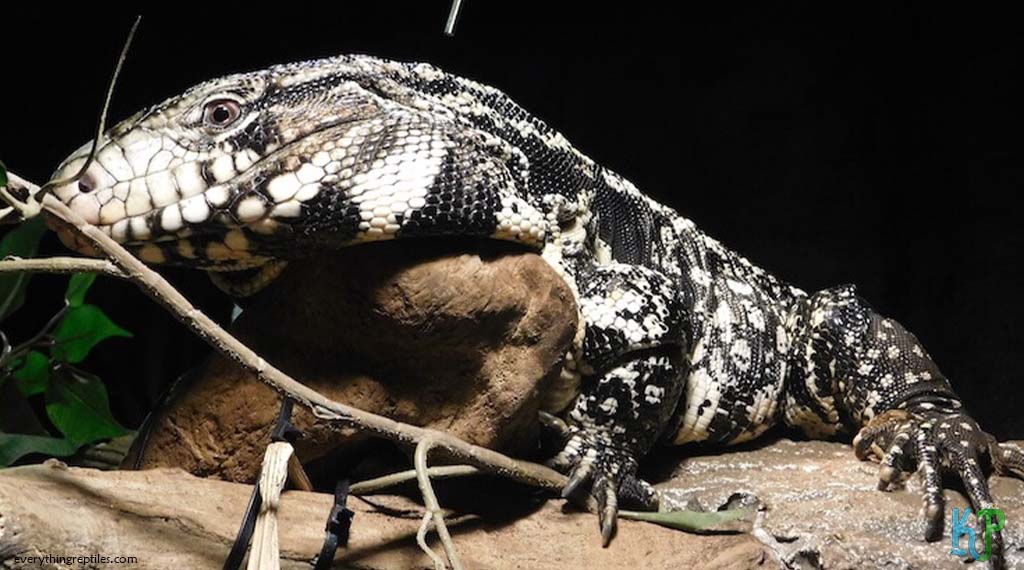
The most popular Tegu pet is the Argentine Black and White Tegu. They are also the biggest of the Tegu lizards earning them the nickname of Aregenine Giants. But while they are the biggest, they are also the calmest, especially when their handlers take a regular and gentle approach to their interactions. But they need to be used to the handling or they will react aggressively, and defend themselves by biting.
Their name comes from the white and black banding patterns on their bodies, with most of them, also covered with speckles. They have small eyes, bead-like scales, thick tails, and bodies, along with a forked tongue.
Since they are suitable for first-time Tegu pet owners, they can be found widely and purchased for $200 to $500. If cared for properly and living in an optimal domicile, the Argentine Tegus can live for as long as 15 to 20 years.
Concussion
For those who have never owned a Tegu, the Argentine Black and White species is the best choice for a starter lizard pet since they are the most docile, despite being the largest of all Tegu species. They need to live in a roomy enclosure with the right setup and proper care.
More experienced Tegu owners could give the Columbian Tegu a shot, though due to their more aggressive nature, they need a handler who is more experienced. Those looking for a morph should consider the Albino, Purple, or Blue variants, as they stand out with gorgeous patterns and colorations.
Regardless of the type of Tegu chosen, they make loyal, visually pleasing pets, so the main aspect of the decision of which Tegu to acquire really comes down to optics and experience.
Don’t miss out on all the important information you need to know before buying a Tegu lizard! Click now to read our next article on Tegu lizard prices and things to consider before making your purchase. or you can check the Top 10 facts about the Tegu Lizard you didn’t know.
Frequently asked questions:
What is a tegu lizard?
A tegu lizard is a type of large lizard that is native to South America. They can grow up to 4 feet in length and are known for their intelligence and trainability. Some people keep them as exotic pets.
Are tegu lizards dangerous?
Tegu lizards can be dangerous if they are not handled properly or if they feel threatened. They have sharp teeth and claws, and their bite can be painful. It is important for owners to understand the proper handling techniques and to provide the lizard with a safe and secure enclosure.
How much is a tegu lizard?
The cost of a tegu lizard can vary depending on the species, the age, and the location of the animal. Juvenile Argentine black and white tegus can cost around $200 to $300, while adult tegus can cost $500 or more. It is also important to consider the cost of food, enclosure, and veterinary care for the lizard.



